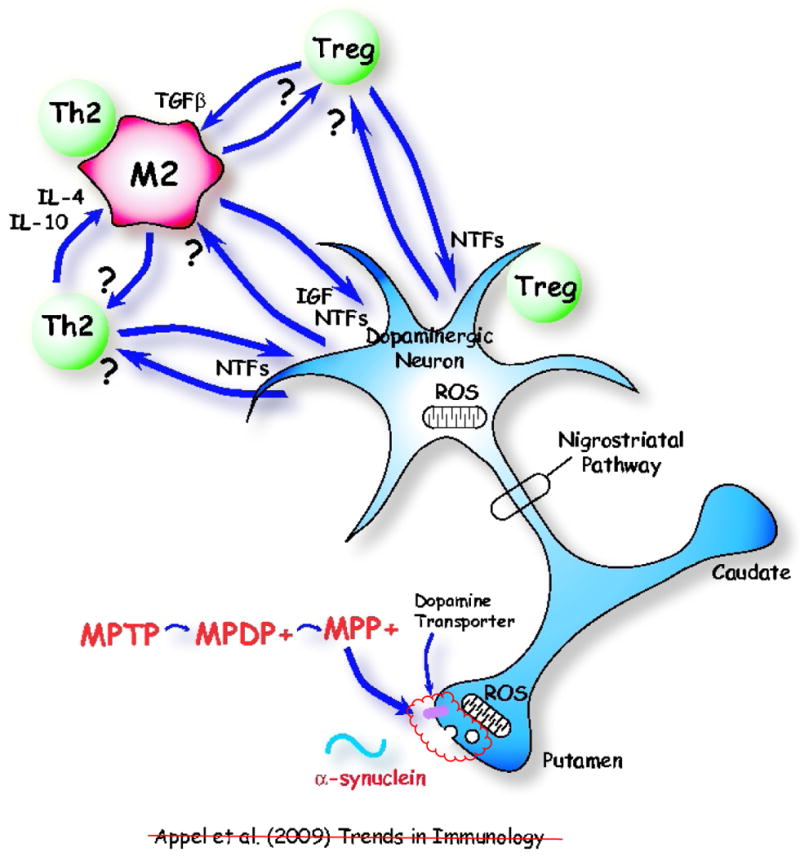Figure 2.

An immunologically protective model following adaptive transfer of T cells in MPTP-induced Parkinson's disease. Th2 and T regulatory (Treg) cells maintain a neuroprotective M2 microglial phenotype through the release of IL-4, IL-10 and TGF-β. Treg cells suppress microglial synthesis and release of reactive oxygen species (ROS) induced by misfolded α-synuclein. Th2 and Treg cells might also protect neurons directly by cell contact-dependent mechanisms or by releasing brain-derived neurotrophic factor (BDNF) and other neurotrophic factors (NTFs). M2 microglia release insulin-like growth factor-1 (IGF-1) and other NTFs, which protect dopaminergic neurons in the substantia nigra (SN). M2 microglia might also positively influence Th2 and Treg cells. Injured neurons may themselves induce M2 microglia and attract Th2 and Tregs cells via release of chemokines.
